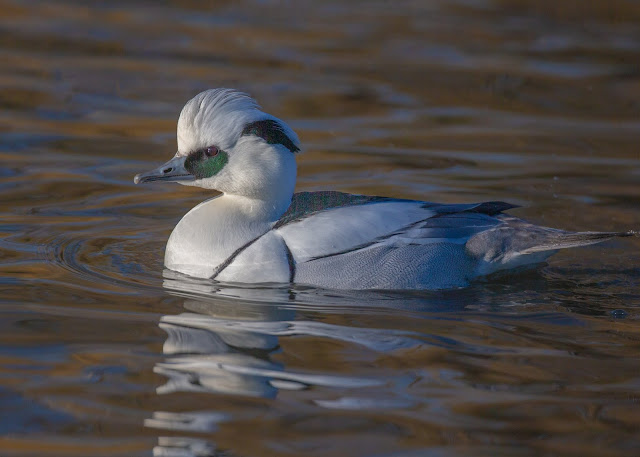With a bright cold winter’s day forecast, and the pit 60 area currently looking like a scene from waterworld, I decided to do something different on Sunday and head down to Kent. Now, the big advantage of getting up at silly o clock on a Sunday morning is that no one else is daft enough to do it. So with clear roads I arrived at my first destination, Reculver on the north coast of Kent, shortly after sunrise. I’ve been to this location several times before and have always enjoyed the long walk along the coastal path. From the car park you have to walk up the hill next to the ruined towers of Saint Mary’s church. The original church was built on the site of a Roman fort in 669 and the now truly impressive but sadly ruined towers were added in the 15thcentury.
A bracing north wind was blowing but the lovely mid-winter sun lifted my spirts and made for a very enjoyable walk east along the coastal path towards cold harbour lagoon. The birding highlight of the walk occurred when a peregrine chased a lapwing out to sea. It looked as though the peregrine had already had one go at the poor lapwing as it looked very dishevelled and out of sorts. The peregrine's technique was to continuously gain a little height and then dive-bomb the lapwing. Then, enter stage left, a merlin appeared and engaged the peregrine in an enthralling aerial battle the red baron would have been proud of. After a few minutes both birds retired to their respect corners with pride intact eventualy departing over the land. One very lucky lapwing followed them onto terra firma a few minutes later.
Turnstones were braving the north wind dashing about frantically and feeding at the waters edge. A flock of ringed plovers seemed far less inclined to brave the waves splashing onto the shore and eventually departed inland, I assume to look for a safer spot to eat. In the scrub on the opposite side of the path from the sea a flock of forty or so corn buntings were restlessly flying through the bushes. It was nice to see a reasonably sized flock of these rapidly declining farmland birds; in Oxfordshire they are only holding on in much smaller numbers.
 |
| Ringed Plover |
A small flock of over-wintering lapland buntings had been reported on and off feeding in amongst the sparse vegetation on the shingle but of them there was no sign or reports all day. I met a local birder who told me that he had seen them first thing on Saturday morning but he believed the strong north wind had caused them to locate somewhat inland onto adjacent farm fields.
I saw a small bird in the distance perched on some rocks close to the turbulent sea and black redstart instantly came to mind. Closer examination, however, proved it to be an incongruous stonechat, a bird I’ve never previously seen perched so perilously on rocks close to the violent sea.
As the morning wore on the costal path became busier and busier with families enjoying the winter sun and I decided that it was time to move on.
My next destination was some forty minutes’ drive away at the Dungeness RSPB reserve located on a small peninsular on the south coast of Kent. Amongst many overwintering wildfowl the highlight was a stunning drake smew, probably my favourite UK duck. I’ve seen them described very aptly as having the appearance of cracked ice, quite appropriate for a very hardly little duck that is only driven south by the very hard winter weather of northern Europe. One or two regularly winter at Dungeness and this particular drake gave stunning scope views but was a little too distant for decent photography. So, I must confess, the attached picture was one I took elsewhere 3 years ago. We occasionally get smew on our local gravel pits and, in fact, my friendly next door neighbour and black belt birder Mick found one on them a few weeks ago. This individual was a red head so called because, yes, you’ve guessed it – it has a red crown. Both females and juveniles share this feature and this particular one was a juvenile.
 |
| Smew |
On return to my car my cold hand let my camera slip and my 1Dx complete with 500mm lens and extender fell heavily on the ground. Que a very loud “oh f**k followed by an embarrassed check that no one else was within hearing range! Now, again, I must confess to previous drops which tested my equipment much harder than this one but the camera must have landed awkwardly as I manged to damage the bayonet fittings on all there components. In a previous life as an experimental physicist I was use to handling very expensive and delicate scientific instruments but, as my wife will testify, I have become much clumsier with the advancing years. Luckily, my kit is insured and I am a member of the cannon CPS scheme which guarantees a two working day repair turn around. So the kit has been dispatched to Cannon’s UK repair centre today via UPS. Not at all the end I would have desired to, what was up to that point at least, a lovely day out in Kent!

Oops!!!! Great stuff otherwise! x
ReplyDelete